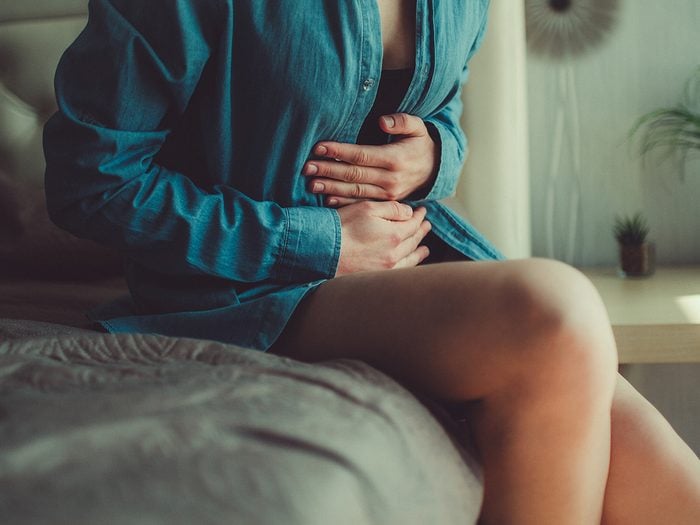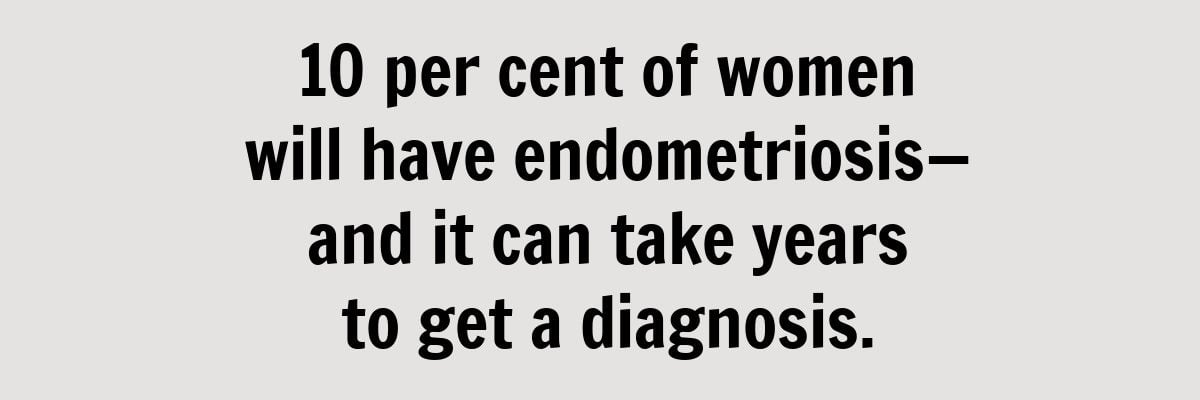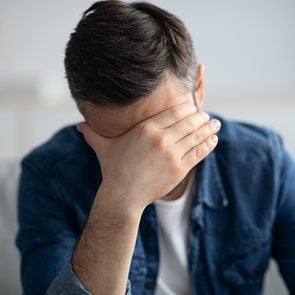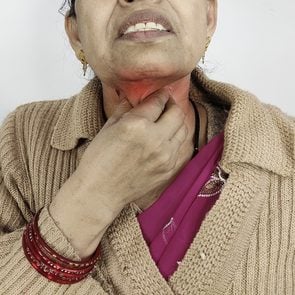Doctors Dismissed Her Monthly Suffering as Period Pain—Until an Ultrasound Revealed Something Strange

“They’re not allowed to tell you anything, but the technician looked scared. She left to get her supervisor...”
Nirvanie Dyal had always had painful periods. The now 42-year-old accountant recalls how, in university, her friends would bring her heating pads to help her feel better. Some days she could barely make it to class. Dyal went to a doctor who told her it was “just period pain” and put her on the birth control pill to stop her menstrual cycle. But because Dyal has a family history of breast cancer and studies show a potential link between the disease and oral contraceptives, it wasn’t a permanent fix.
In 2017, after Dyal had been on the pill for 10 years, her family doctor in Toronto told her it was time to stop. She did—and the pain returned. Every 21 days, Dyal would spend hours curled up in the fetal position, hugging her abdomen. “It felt like someone was cutting my insides with a knife,” she says. Over-the-counter medication did nothing to relieve the pain. Nor did herbal teas and other naturopathic remedies. The only thing that seemed to help was a warm bath.
Over the next two years, the pain worsened. It became so intense that Dyal had to schedule her life around her period, knowing that for four days every month, she couldn’t make any plans and had to take time off work. And with the pain came bloating. In 2019, Dyal was determined to attend a friend’s wedding but felt too uncomfortable to enjoy herself. “I looked like I was four months pregnant.” A physical exam with a gynecologist didn’t yield any answers. Once again, the pain was attributed to her menstrual cycle.

By the spring of 2020, the bloating had stopped dissipating when her period did. Then the pain spread to her back. She also found she could eat only small amounts before she felt full. Her doctor sent her for an ultrasound. “They’re not allowed to tell you anything, but the technician looked scared,” Dyal says. “She left to get her supervisor.”
The ultrasound revealed that Dyal had ascites, a buildup of fluid in the abdomen. She was sent to the ER, where doctors “tapped” her stomach, inserting a long needle and removing a litre of dark brown fluid. “I was lying there watching it happen, and I was so scared,” she says. “It was surreal.” She was told it could be cancer, or maybe an infection in her liver. Given her family history of cancer, she was terrified.
Dyal was discharged but returned the next day for more tests, including another ultrasound and a CT scan. She remained in the hospital for four days, but doctors couldn’t figure out what was wrong. Ascites is most often associated with cirrhosis (scarring) of the liver, heart failure or cancer. Lab tests found only that the fluid was “hemorrhagic,” or bloody. Dyal was referred to a liver oncologist, who ruled out cancer; a rheumatologist, who ruled out Crohn’s; and a gastroenterologist, who used an endoscope to explore her stomach but couldn’t find anything amiss.
By now Dyal, who was unmarried, was worried about her fertility and tried freezing her eggs, but due to all the fluid, doctors were able to retrieve only one. She froze it anyway. In November 2020, she underwent an exploratory surgery, and doctors discovered that once again her abdomen was full of bloody fluid. She also had tea-coloured patches of tissue on her liver, colon and inside the lining of her stomach. The surgical team suspected the test ruling out cancer may have been wrong, or that it was an infection. They biopsied several of the patches and were surprised when the lab results came back positive for endometriosis. Dyal was referred to one of the gynecology teams at Mount Sinai Hospital in Toronto.

Endometriosis is a condition in which tissue similar to that normally lining the uterus begins growing outside of it. Prevalent in roughly 10 percent of Canadian women, it can typically take around seven years or longer for patients to be diagnosed because it is so often dismissed as “normal” period pain. Pain during the menstrual cycle is the most common symptom; fluid buildup is not. After the surgery, the fluid in Dyal’s abdomen continued to accumulate. “I couldn’t lie down because the pressure made it hard to breathe,” she says. “I had to prop myself up on pillows to sleep.”
Not long after that, Dr. Meghan McGrattan, an advanced gynecologic surgery fellow at Mount Sinai, removed almost three litres of fluid from Dyal’s abdomen. In the dozens of patients she’d tapped over the years, McGrattan had never seen ascites associated with endometriosis. She did some research and discovered that cases like Dyal’s are rare. Only about 127 endometriosis patients worldwide have presented with the same fluid buildup. “Endometriosis is not a well-understood cause of ascites, but we are continuing to learn more about it,” says McGrattan. “If you don’t know to look for it, you won’t find it.” McGrattan hopes the discovery helps ensure women like Dyal won’t have to wait years for a diagnosis.
Doctors are still working toward determining an exact cause of endometriosis and finding a definitive cure, but there are medications that keep the pain at bay. These medications can also increase fertility. “We counsel patients that it’s a chronic disease and that the treatment goal is to help them feel as well as possible,” McGrattan says. When Dyal learned that the lab test confirmed she had endometriosis, not cancer, she felt only relief. “I wish I could go back and tell my younger self that it isn’t normal to be in that much pain,” she says. “I might have pushed harder.”
Next, check out 20 symptoms you should never ignore.






